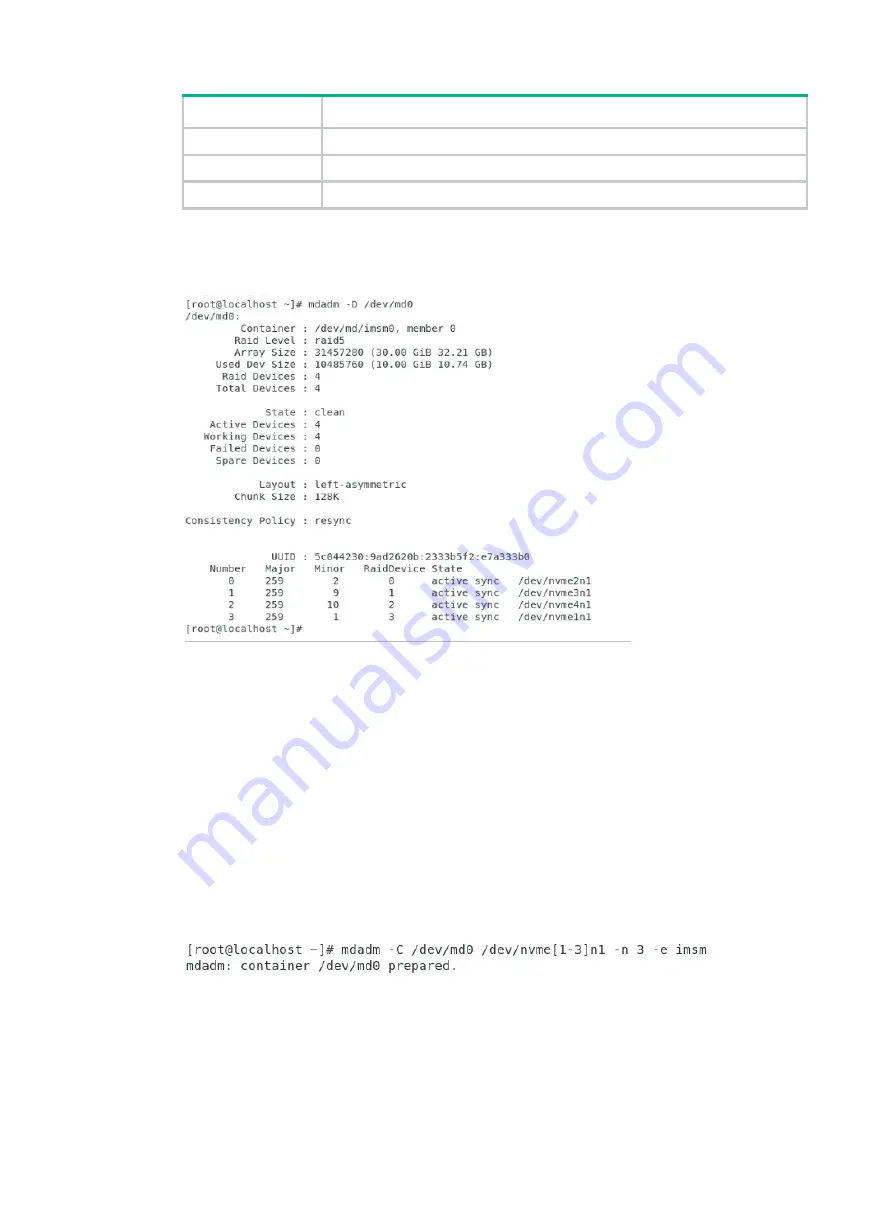
17
Parameter
Description
n
Number of NVMe drives in the RAID array.
l
RAID level.
z
RAID capacity.
3.
Execute the
mdadm –D /dev/md0
command to view RAID information, including container
name, RAID level, strip size, number of NVMe drives, and RAID status, as shown in
Figure 26 Viewing RAID information
Configuring hot spare drives
Use one of the following methods to configure hot spare drives:
•
Configuring hot spare drives while creating a RAID array
•
Configuring hot spare drives after RAID array creation
Configuring hot spare drives while creating a RAID array
1.
Verify that VMD is enabled. For more information, see "
2.
Execute the
mdadm –C /dev/md0 /dev/nvme[1-3]n1 –n 3 –e imsm
command to create
a container, as shown in
. The number of NVMe drives for creating the container is
n
+ 1. This section takes 3 as an example.
Figure 27 Creating a container
3.
Execute the
mdadm –C /dev/md1 /dev/md0 –n 2 –l 1 –z 10G
command to create a
RAID array, as shown in
. The number of NVMe drives for creating the RAID array is
n
. This section takes 2 as an example.
Summary of Contents for UniServer R4300 G6
Page 36: ...21 Figure 23 Selecting the controller and RAID level 4 Select drives and then click Next...
Page 40: ...25 Figure 27 Selecting the RAID array to be deleted 2 In the dialog box that opens click Yes...
Page 66: ...24 Figure 37 Confirming RAID creation 7 Click OK to complete the RAID creation...
Page 164: ...89 Figure 158 Selecting Main Menu 2 Select Controller Management and press Enter...
Page 321: ...90 Figure 138 Configure Controller Settings screen for the RAID P460 B2...
Page 469: ...19 Examples Viewing physical drive informatoin Syntax mnv_cli info o pd Examples...
Page 513: ...7 Figure 10 Selecting Drive Management 4 Select the target drive and then press Enter...
Page 514: ...8 Figure 11 Select the target drive 5 View the value of the Status field...
Page 529: ...23 Figure 33 Identifying a storage controller 2...






























